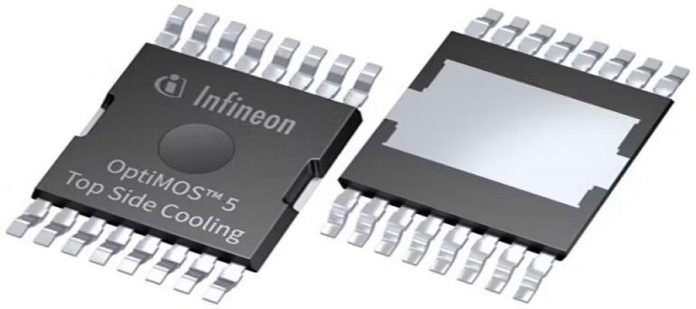In the midst of the electrification wave sweeping the automotive industry, Infineon Technologies is gearing up to address the rising demand for electronic control units (ECUs) requiring 24 to 72 V. This transformation is not limited to passenger cars and commercial trucks; it extends to two- and three-wheelers and even 3-wheelers. As a result, Infineon Technologies is expanding its OptiMOS 5 portfolio of automotive MOSFETs, offering solutions in the 60- and 120-V range with various package options to cater to different application needs.
Applications Across the Automotive Spectrum
Infineon’s automotive MOSFETs play a pivotal role in a wide range of automotive applications, including driving motors for pumps, fans, ventilation, seat adjustment, sunroofs, and safety-critical systems like electric power steering (EPS), electric braking, and injection systems. These MOSFETs also serve as switches in onboard chargers, HV/LV DC-DC converters, battery-management systems, and inverters. Infineon’s MOSFET portfolio encompasses P-channel, N-channel, and dual-channel varieties designed to meet the rigorous AEC-Q101 automotive qualification standards and beyond.
OptiMOS 5 Enhancements
The latest additions to the OptiMOS 5 family bring several enhancements to the table. Notably, they feature a narrowed gate threshold voltage (VGS(th)), enabling the design of systems with parallel MOSFETs, ultimately boosting output power capabilities. Among the new offerings are the IAUTN06S5N008, IAUTN06S5N008G, and IAUTN06S5N008T, which are 60-V MOSFETs, and the IAUTN12S5N017, IAUTN12S5N018G, and IAUTN12S5N018T, which are 120-V MOSFETs. The on-resistance (RDS(on)) for the 120-V MOSFETs ranges from 1.7 to 1.8 mΩ, while the 60-V versions boast an impressive 0.8 mΩ, making them ideal for high-power 24-V clean-air-vehicle (CAV) applications and HV-LV DC-DC converters in electric vehicles. Furthermore, the 120-V devices are suitable for 48- to 72-V supplied traction inverters used in two- or three-wheelers and light electric vehicles.
The Arrival of OptiMOS 7
Infineon is not stopping at OptiMOS 5; they are already gearing up for the next generation with the introduction of OptiMOS 7. This new MOSFET generation promises higher power efficiency, reduced switching losses, and an increased safe operating area (SOA) for high-current applications. Paired with compact packages, OptiMOS 7 targets various automotive 40-V MOSFET applications, including electric power steering, braking systems, disconnect switches, and innovative zone architectures. The family’s versatility extends to battery management, e-fuse boxes, DC-DC converters, and BLDC drives.
Axel Hahn, Senior Vice President of Automotive MOSFET of Infineon, expressed optimism about OptiMOS 7, stating, “The OptiMOS 7 40-V MOSFET family will set a new benchmark in power density, current capability, and chip ruggedness.” OptiMOS 7 MOSFETs bring reduced switching losses, improved SOA robustness, and high avalanche current capability. They are available in various automotive standard packages, including SSO8 5×6 (TDSON-8), HSOF-5, HSOF-8, and topside cooling options. These packages not only offer a high current capability of 175 A but also a small footprint of just 30 mm2, contributing to high system efficiency and reduced space requirements. Additionally, they aid in improving cooling while lowering system costs.
Infineon’s OptiMOS 7 is poised to make a significant impact on high-power automotive applications, including electric power steering (EPS), safety switches, DC-DC braking systems, power disconnect switches in zonal architectures, battery management, eFuse boxes, and BLDC drives in environmentally friendly vehicles. The on-resistance (RDS(on)) for OptiMOS 7 ranges from 0.42 to 3.0 mΩ, ensuring robust performance across a broad spectrum of applications.









